Nairobi National Park - The Park Within The City

What’s the best way to describe the Nairobi National Park?
A habitat of mostly open grasslands, rocky gorges, and a riverine forest where giraffes browse gracefully, grazers cautiously nibble on grass, and ravenous predators hunt.
The Nairobi National Park is located approximately 7km from the center of Nairobi city. Amid planes flying overhead, bustling city life, and skyscrapers in the background, the park still exudes an atmosphere of tranquility and spontaneous wildlife action.
If you’re in Nairobi on a brief stopover or want to start your African bush safari straight away, head over to the Nairobi National Park. It’s a fantastic way to experience the wilderness without stepping outside of the city.
What can you expect from this national park?
A Brief History of the Nairobi National Park
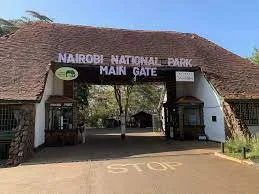
Encompassing an area of 117 sq km, the Nairobi National Park is one of the smallest national parks in Kenya but holds plenty of wildlife. It has a mix of habitats ranging from vast grassy plains dotted with acacia bush to broken bush country, a highland dry forest, and a riverine.
Besides being the first national park to be set up in Kenya, it is the only protected wildlife area in the world that’s close to the capital city. As the young Kenyan nation grew and people settled in Nairobi, human-wildlife conflicts became the order of the day.
The animals that previously roamed freely now found obstacles in the shape of people’s homes and farms— which they destroyed, by the way. Human beings found it necessary to walk around with rifles for safety.
To resolve the crisis, the govt confined the wildlife to the southwest side of Nairobi, and the park was gazetted in 1946. It became the only park in the world where animals live so close to human settlements.
Nairobi National Park is home to the endangered black rhinos, giraffes, buffalos, impalas, hartebeest, wildebeest, waterbucks, elands, gazelles, and zebras. Right on the back of these grazers are lions, leopards, hyenas, and cheetahs.
Of the big 5, elephants are notably absent. But then the Sheldrick Wildlife Trust, an orphaned elephant sanctuary, is located within the park. A visit will reward you with sights of baby elephants playing in the mud or having their bottle.
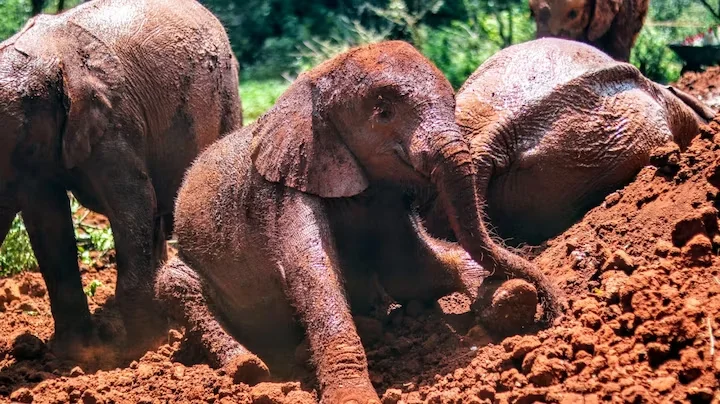
Both endemic and migratory bird species such as the ostrich, blacksmith lapwing, secretary bird, long-tailed fiscal, and pallid harrier, can be seen here.
The best time to visit Nairobi National Park is in the dry season aka January and February as well as July to October. It is during these months that vegetation is sparse and the wildlife can be spotted easily.
Are there other national parks in Nairobi?
No, this is the only national park Nairobi has. And it doesn’t disappoint. You’ll find a variety of animals at Nairobi National Park making it worth your while.
Book Your Trip to Nairobi National Park
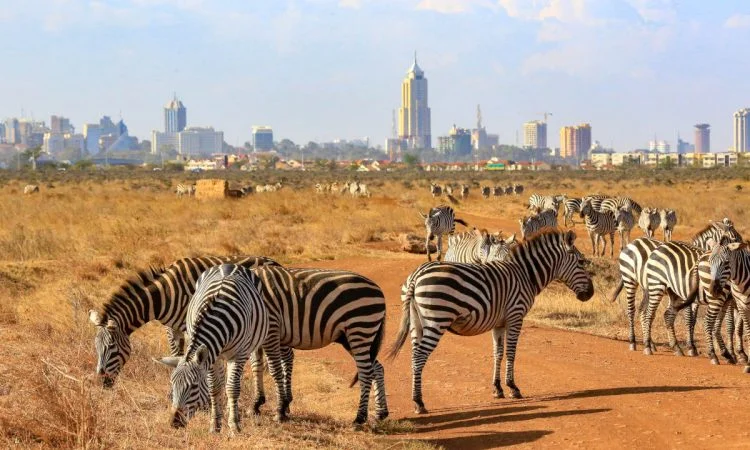
Being so close to the capital city where your plane is likely to land, a trip to Nairobi National Park is a great way to start your wilderness safari. The park’s small size is sufficient to see most animals on a single day’s trip.
James Gatheru, our senior consultant is on hand to arrange a day’s safari from Nairobi City to the park. As you cruise in our luxury land cruisers, our expert guides will point out big cats and other animals on the way.
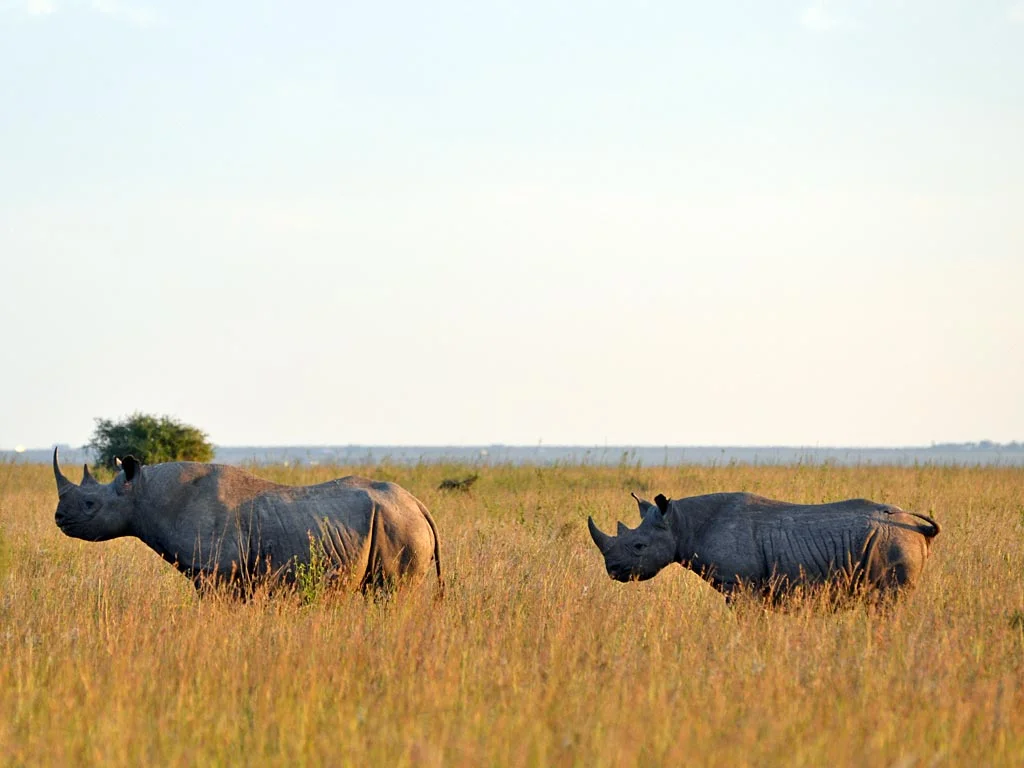
If you’re planning to stay in Nairobi longer, we can help you book top-rated hotels close to the Nairobi National Park including the Ololo Safri Lodge or Emakoko. You can also choose to stay in the only tented camp inside the national park for a more authentic safari experience.
We invite you to reach out to us via phone or WhatsApp at +254-704-532-105. You can also connect with us via email at safarioffers@kenyaluxurysafari.co.uk or safarioffers@ajkenyasafaris.com.
Main Activities & Attractions in Nairobi National Park
Being so close to the city, what attractions does the first national park in Kenya offer?
Game drives

As with most national parks and game reserves, game drives are popular here. Early morning drives just as the animals are stirring and the African sun is rising are the most rewarding.
As herds of gazelles and other grazers search for fresh grass and predators lurk in the bush, it is the ideal time to catch a breakfast chase. Night drives are great for spotting nocturnal animals hunting.
Nairobi Safari Walk
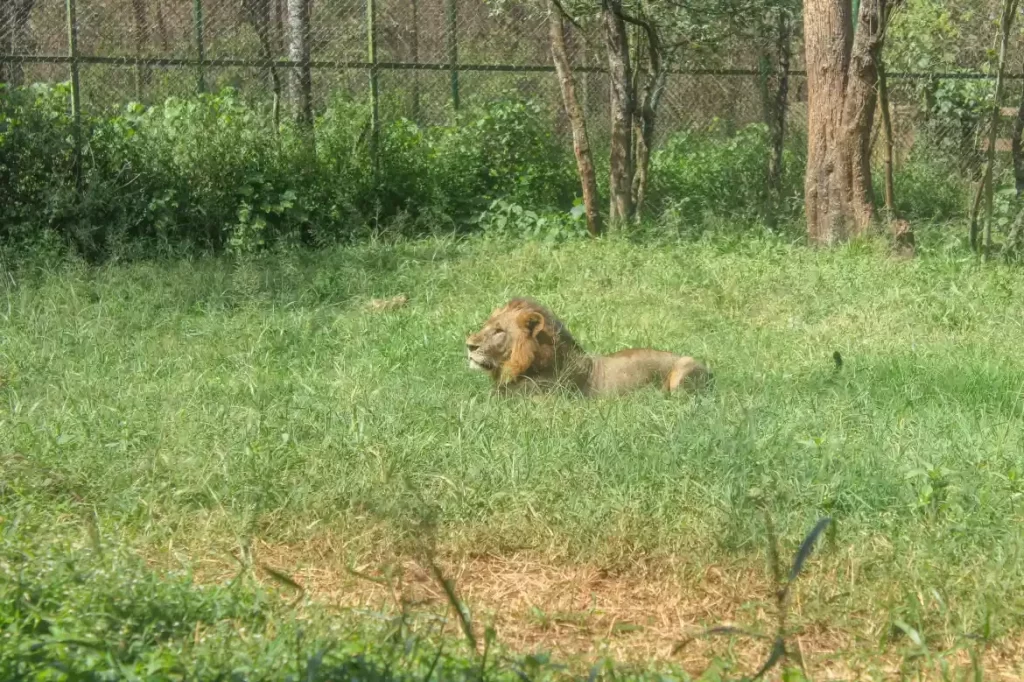
One of the things we’ll caution against is getting out of your tour vehicle on a drive—because there is no telling which wild animal is lurking nearby. However, Nairobi National Park offers safari walks in a zoo-like atmosphere where kids are also allowed.
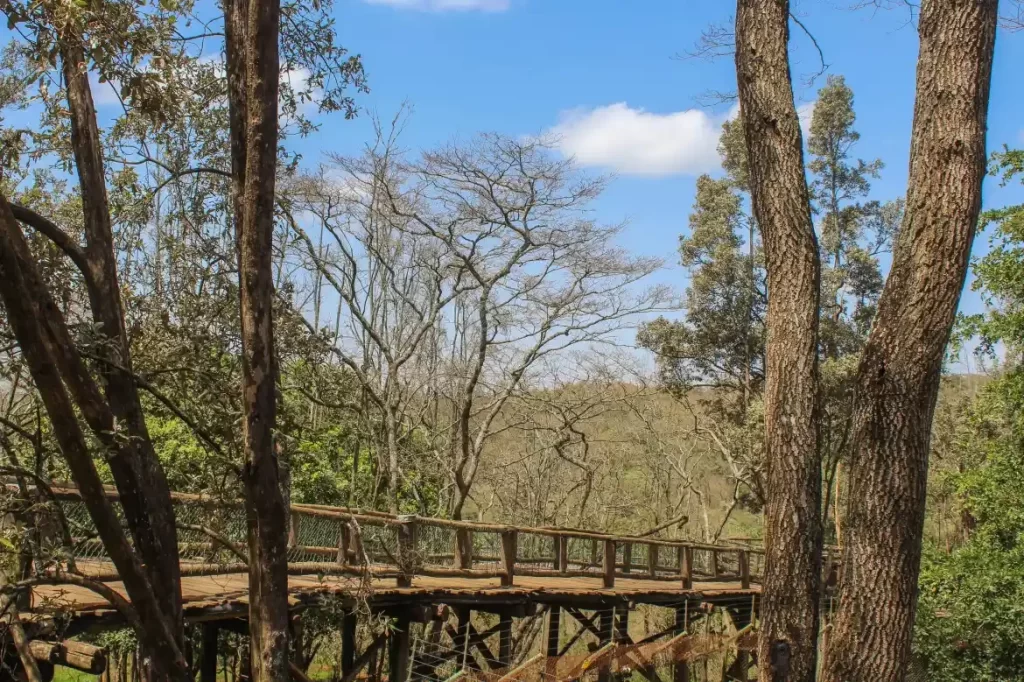
On the Nairobi safari walk, guests can stroll through the forest to see wildlife in their enclosures. They can also get on the raised wooden boardwalk for elevated views of the forest. A taste of what to expect when you’re out in the wild.
Bird-Viewing
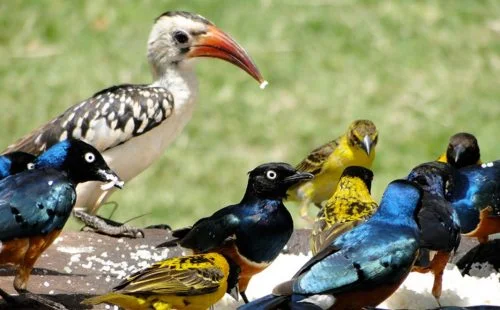
Thanks to the park’s savannah grassland habitat, a significant number of bird species such as the Jackson’s widowbird find it comfortable to live in and breed. This makes the Nairobi National Park a favorite bird-watching destination all year round.
April and November are particularly interesting bird-watching months since migratory birds from other African countries and Europe arrive to breed.
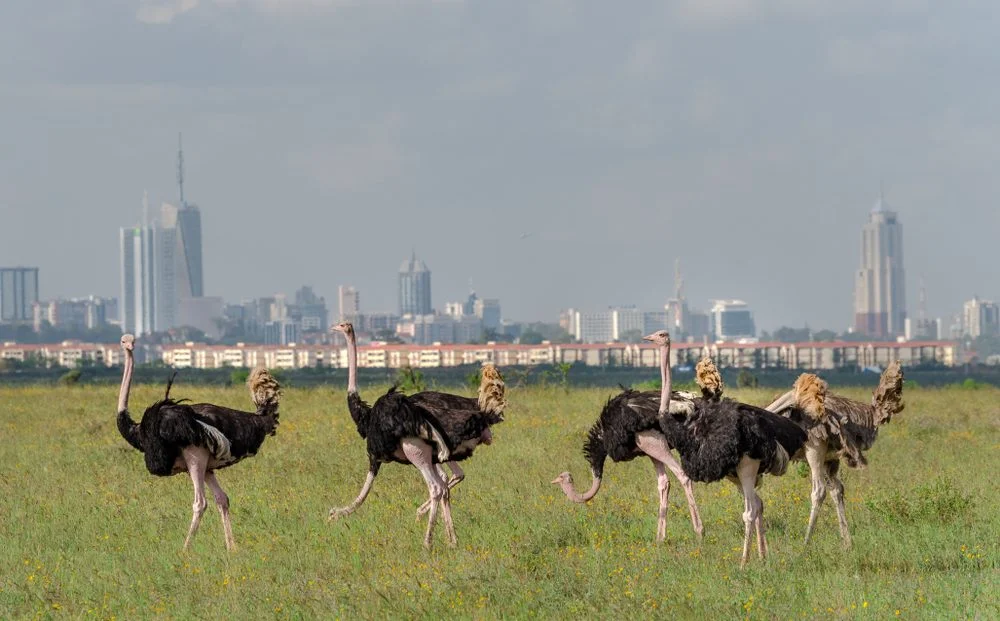
Bird species at the park include the lesser Kestrel, Madagascar pond-heron, Martial Eagle, African Quail-finch, Northern pied babbler, Grey Crowned Crane, and Secretary birds. And we can’t forget our very own ostriches.
Other attractions include
The Ivory Burning Site
To show Kenya’s commitment to stopping the ivory trade and promoting the conservation of Elephants, up to 12 tons of ivory were burnt here in 1989.
In subsequent years, more ivory, rhino horns, and exotic animal skins have also been burned at this historic site to send a message to poachers that Kenya doesn’t support the trade.
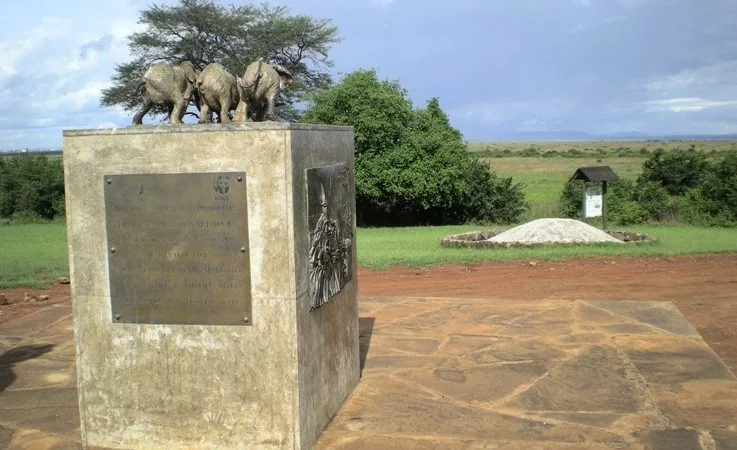
On that historic ivory-burning site now sits a monument along with ashes of the burned ivory as a memorial. The site is elevated which makes it perfect for a picnic and enjoying the park’s views.
Walking Trails to Hippo Pools
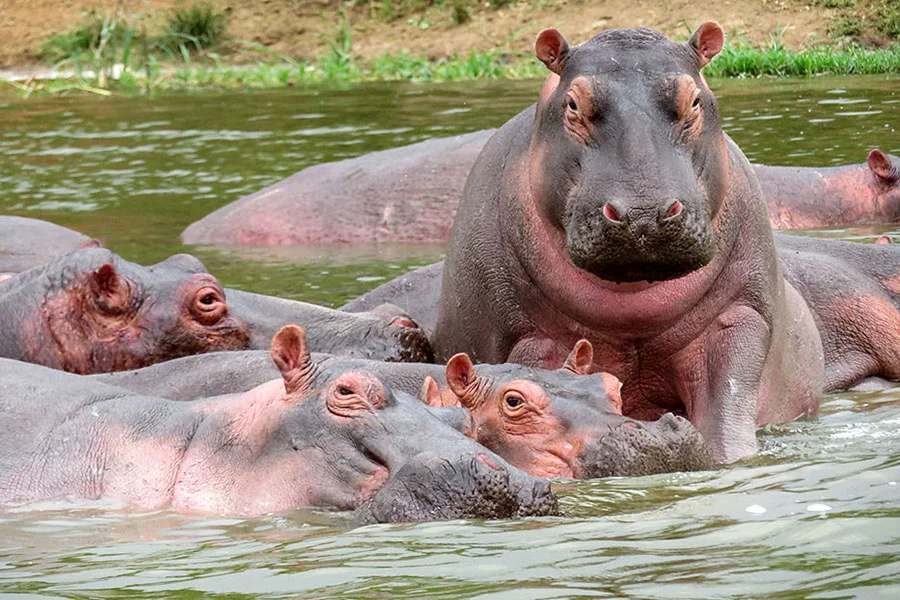
As part of its attraction, the park has set up walking trails along the Athi River to a pool where hippos hang out.
The walking trails follow a shady forest path leading up to a picnic spot. Guests can relax and enjoy their lunch/snacks, and look out for hippos, crocs, and varied bird species. An armed ranger will accompany you on the walking trails for safety purposes.
Accommodation Facilities at the Nairobi National Park

Due to the park’s close proximity to the city, the Nairobi Tented camp happens to be the only camp within the park.
The camp doesn’t disappoint. All nine guest tents are en-suite and come with wardrobes, luggage racks, writing desks, verandahs, and views of the park.
Meals are served in the dining tent and you can enjoy them under tree shade or the star-filled skies. And what could beat sundowners by the campfire before bedtime?
Nearby Accommodation Options
There are several accommodation options close to Nairobi National Park such as
Ole Sereni Hotel
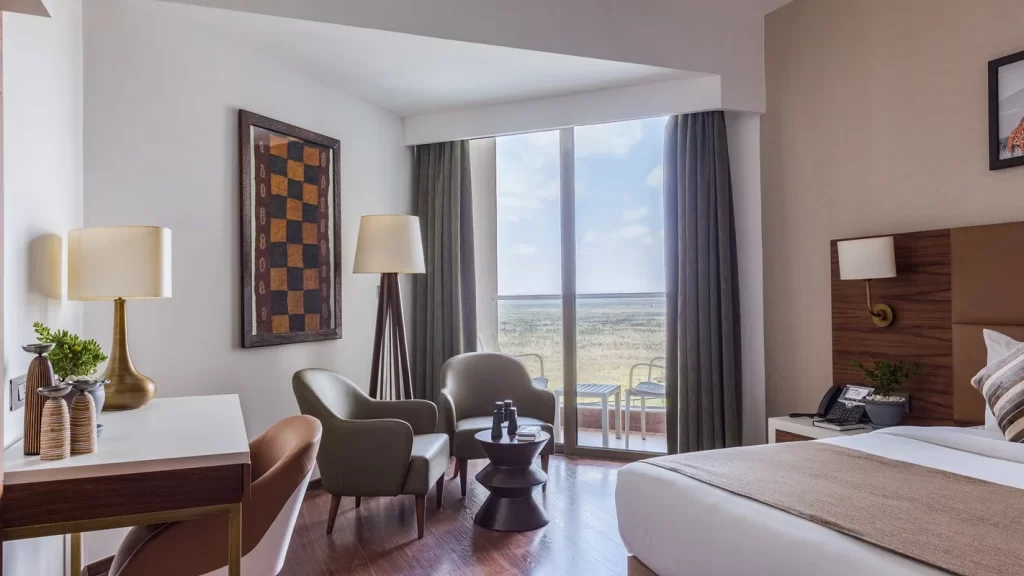
Bordering Nairobi National Park to the North is the luxurious Ole Sereni Hotel. A 5-star hotel that exudes sheer luxury, comfort, and sweeping views of the park.
Ole Sereni offers exquisite rooms spread over three floors, fine dining facilities a restaurant that serves international cuisines, a snack bar, and a Pool bar.
After a thrilling day at the Nairobi National Park, you can unwind at the roof-top heated pool or the bar, or indulge in relaxing massages. Better still, keep up with your exercise regimen at the Gym and aerobics room. An excellent option for the indulgent traveler.
Ololo Safari Lodge

Located south of Nairobi National Park, along the Mbagathi River, is the charming Ololo Safari Lodge.
The area is so serene, the views of the park breathtaking, accommodations luxurious, and you can watch wildlife in the vicinity. It’s hard to imagine that you’re less than an hour’s drive from Nairobi city and the airport.
When you’re not out on a safari in the park, you can take a dip in the lodge’s pool or indulge in a relaxing massage. Better yet, enjoy your wilderness surroundings with a drink in hand.
The Emakoko
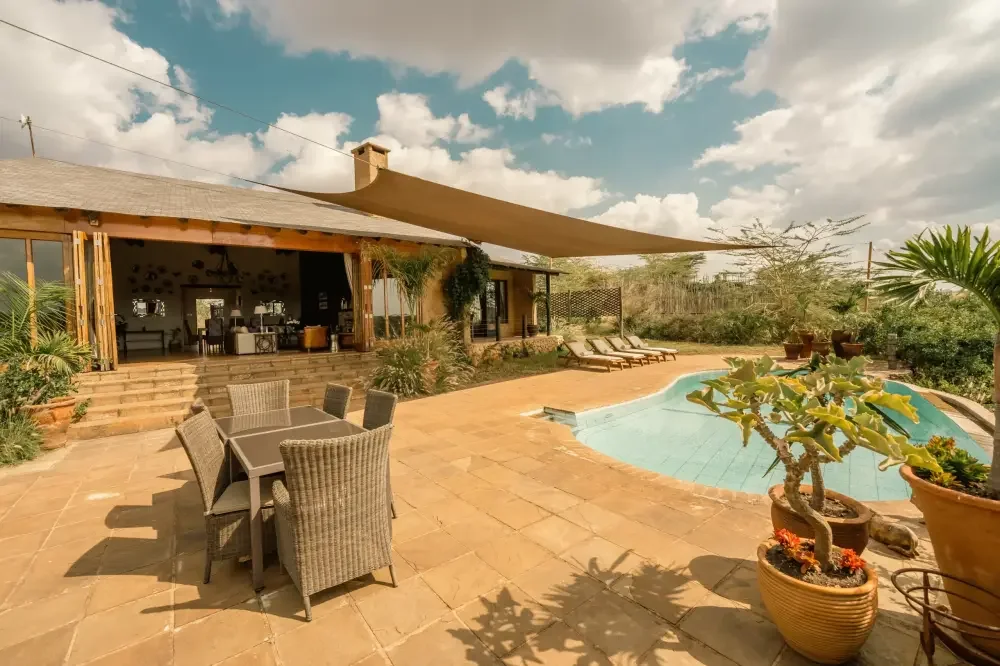
Nestled among green shrubs south of the Nairobi National Park is The Emakoko, a delightful boutique lodge ideal for starting or finishing your wilderness safari. The atmosphere feels unspoiled and tranquil enhancing your senses of the African wilderness.
Emakoko is designed to capture the nature lover’s heart. Whether you’re lounging in your room, by the pool, or dining on the terrace, you’ll have spectacular views of the park or the Mbagathi River meandering by.
The ensuite guest rooms are tastefully decorated, comfortable, and airy thanks to their large windows and the meals are nothing short of mouthwatering
Best National Parks in Kenya That Are a Must Visit
Besides Nairobi National Park, these national parks in Kenya will definitely give you a close look at the wildlife species in our country.
Tsavo National Park
The Tsavo is the largest park in Kenya. It is located on the southeastern side of Kenya and is divided into two distinct parts—Tsavo East and Tsavo West.
Tsavo East National Park is flatter with rock outcrops and arid vegetation which makes it easier to spot wildlife. The lesser kudu, waterbucks red-skinned elephants, buffalos, rhinos, hippos, crocs, leopards, lions, and over 500 bird species call Tsavo East home.
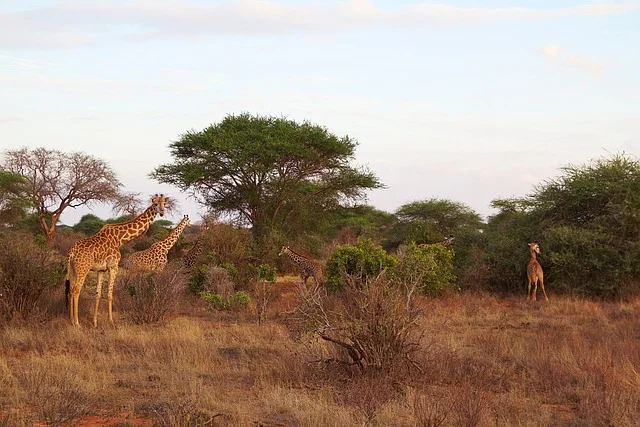
Tsavo West is the stark opposite of the East boasting greener scenery thanks to its riverine vegetation, mountain forest, palm thickets, and acacia woodlands.
The park’s habitat also comprises open plains and rocky ridges and here you will find red-skinned elephants, dik-dik, zebras, lesser kudu, giraffes, buffalos, leopards, cheetahs, and nocturnal porcupines. More than 600 bird species flock to the park.
What can you do here?
The national parks are famous for game viewing, cave exploration, camping, guided walks and treks as well as bird watching.
Amboseli National Park
The Amboseli is loved for its spectacular views of Mount Kilimanjaro and abundant wildlife. It’s one of the best places to see the African Elephants alongside other animals like buffalos, giraffes, dik-dik, Lesser Kudu, and over 400 species of birds.
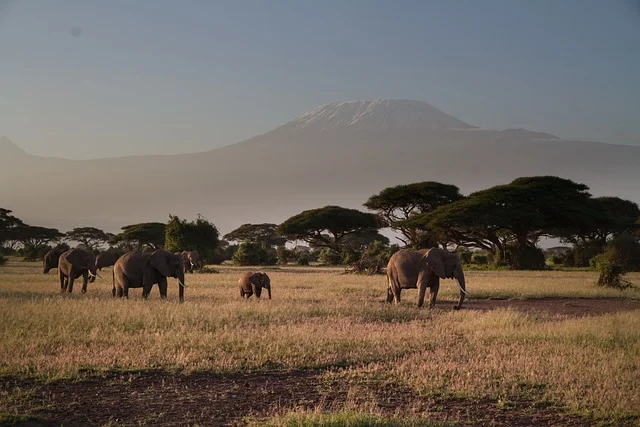
Predators include wild dogs, cheetahs, lions, and leopards. Rhinos love hanging out by the temporary Lake Amboseli as do the crocodiles.
The national park is endowed with various habitats including swamps and marshes, woodland, and plains. Guests can enjoy game drives, cultural visits to Maasai villages, camping, and bird watching.
Meru National Park
Compared to the dry savannahs synonymous with most Kenyan parks and game reserves, Meru National Park is a green paradise. The park has hilly landscapes, multiple rivers, mountain-fed streams, open plans, and woodlands.
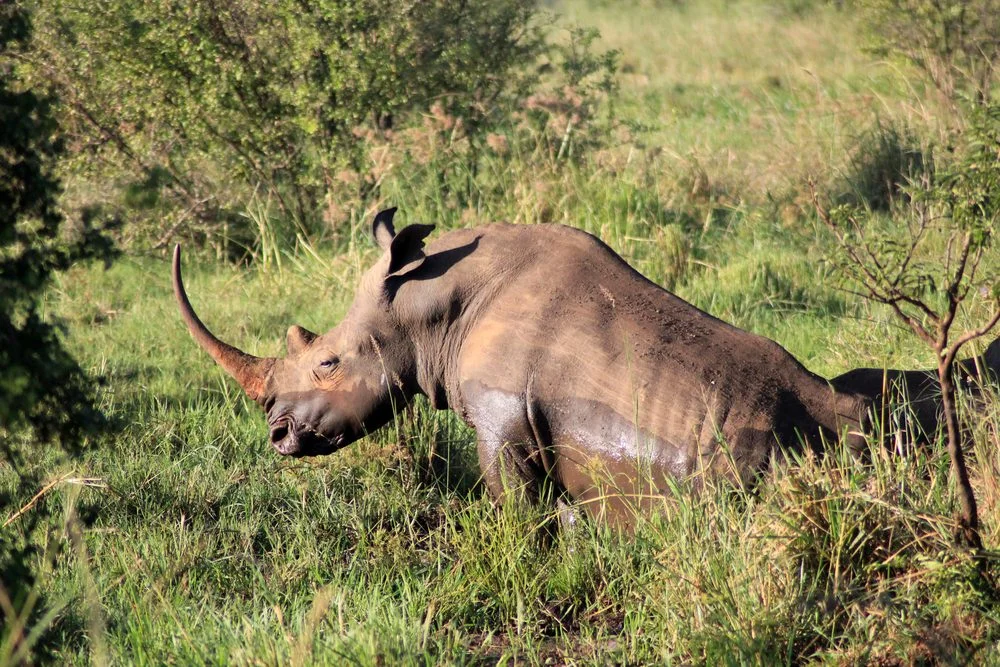
The national park is located a 7-hour drive from the city and is ideal for wildlife viewing, birding, camping kayaking, and hiking.
The wildlife found in Meru National Park includes Buffalos, elephants, bush pigs, zebras, hartebeest, waterbucks, eland, giraffes, hippos, cheetahs, leopards, and birds. There is no shortage of our slithering neighbors—from the deadly cobras to puff udders, and pythons.
Mt Kenya National Park
A 4-hour drive from Nairobi and you will find yourself at the Mount Kenya National Park. The park has a reputation for being home to Africa’s second-largest mountain, impressive landscapes, and interesting wildlife adaptation.
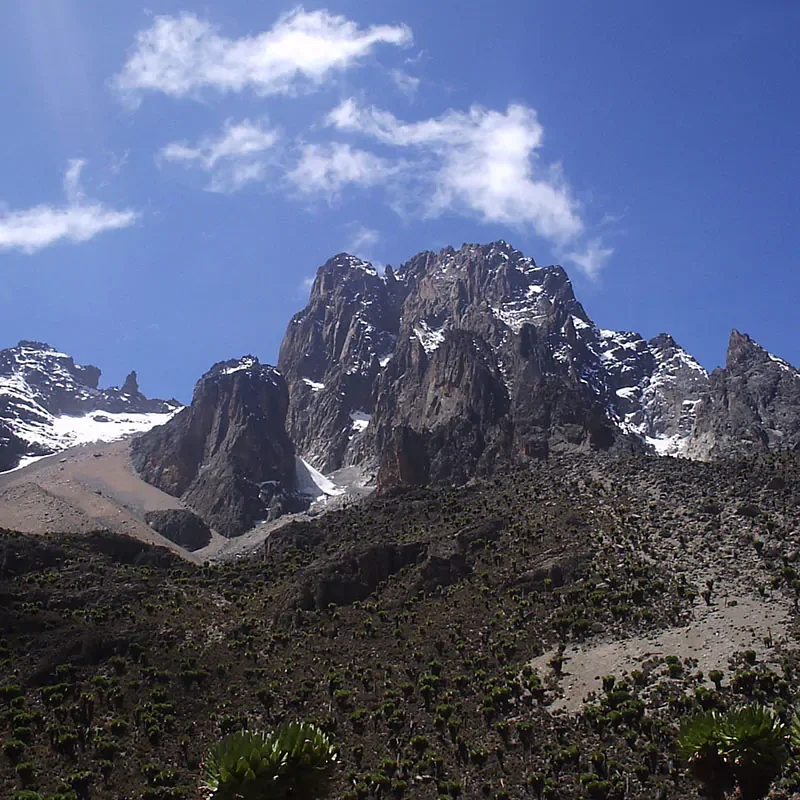
At the foot of the mountain, visitors will encounter dense mountain forests and bamboo thickets. This is where the black rhinos, elephants, giant forest hog, white-tailed mongoose, black-fronted duiker, suni, tree hyrax, and leopards hang out. There are lions and hyenas but can be rare to see.
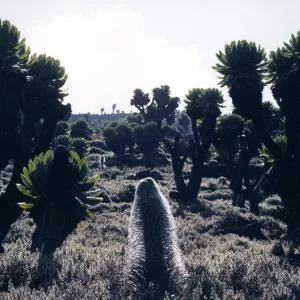
As you move upwards you’ll find pristine wilderness covered in giant vegetation home to the common duiker, mouse shrew, and hyrax. Further up the national park and the mole-rat is home.
The rugged glacier-clad peaks, snowfields, and mountain lakes are beyond breathtaking. For the adventurous visitor, cave exploration, mountain climbing, and camping can be added to your game-viewing experiences.
Masai Mara Game Reserve
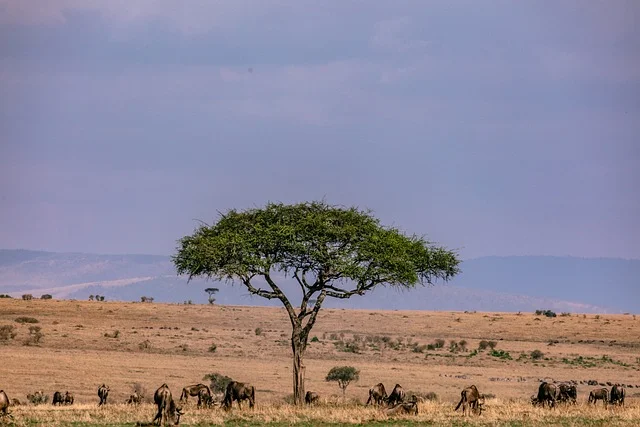
From the lush highlands, it is back to the savannah and the Masai Mara. Amid vast open grasslands dotted with acacia trees, there are different species of wildlife that reside here.
The wildlife population here includes all the Big 5 alongside cheetahs, hyenas, jackals, foxes, vultures, eagles, wildebeest, gazelles, zebras, hippos, and the Nile crocs.
Of the national parks toured in Kenya, the Masai Mara is the most famous. The park allows visitors to experience the annual migration where thousands of wildebeest make the treacherous crossing from Tanzania. The wildebeest must find suitable crossing points along the Mara River to get across.
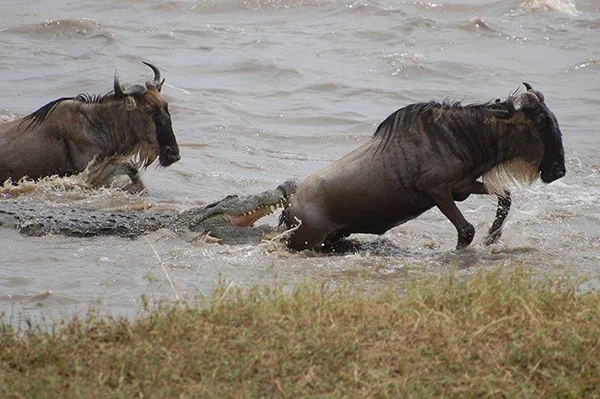
They risk hurting themselves in the river and Massive Nile crocodiles lurk in the muddy waters waiting to feast on them. A host of lions and other predators also prey upon these animals in search of dinner.
It is both thrilling and heart-wrenching to see these animals fight to survive. July to October is the ideal time to visit and witness this migration
The Samburu Game Reserve
Unlike Nairobi National Park or the Masai Mara where thousands of guests troop for some wilderness action, the Samburu National Reserve offers a more secluded safari experience.
The semi-arid features of the park enhance its pristine feeling that makes you feel like you’ve left it all behind.
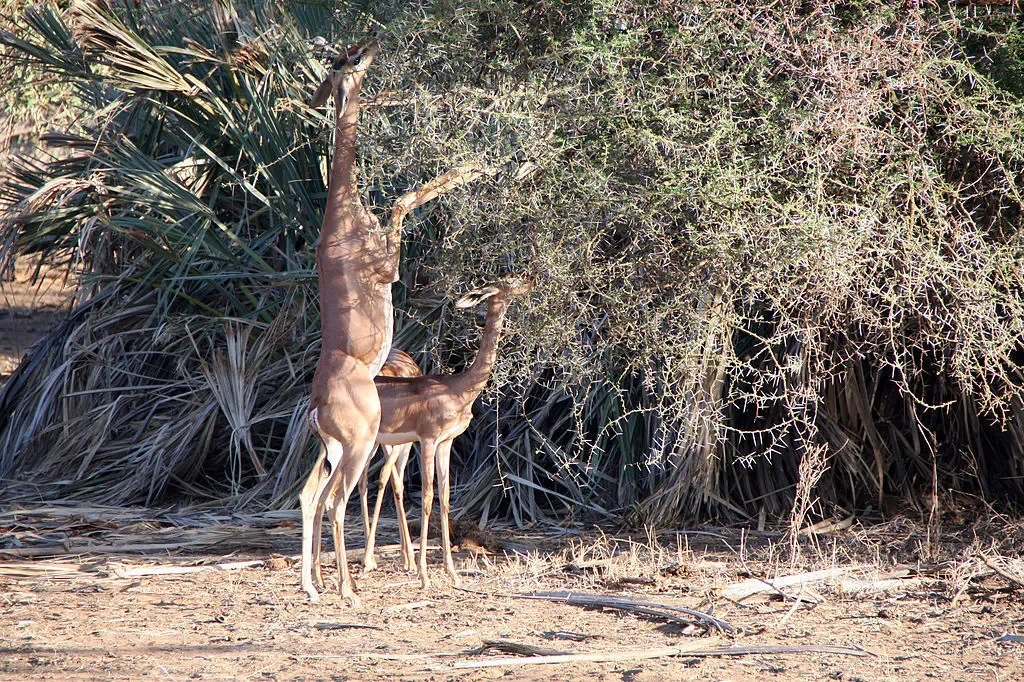
Of all the big five, the rhinos are missing. But the park is home to rare and endangered animal wildlife species like the rare Gerenuk (giraffe gazelles), Reticulated Giraffe, and Beisa Oryx.
Speaking of oryxes, Kamunyak, a resident lioness in the park found her way into many people’s hearts when she started adopting baby oryxes, rather than eating them. Naturally, other lions devoured the oryxes but the park’s rangers now actively rescue these baby oryxes before they meet their fate.
With abundant wildlife in the park, guests can also go for camel riding safaris, walking safaris, and cultural visits to Samburu people’s villages.
Book Your Package to the National Park Today
From day-long safaris to Nairobi National Park or tour packages at some of the most wildlife-rich parks in Kenya, we have something just for you. Each park has something special to offer and our guides are the experts who will help you find “that moment.”
Talk to us today.

